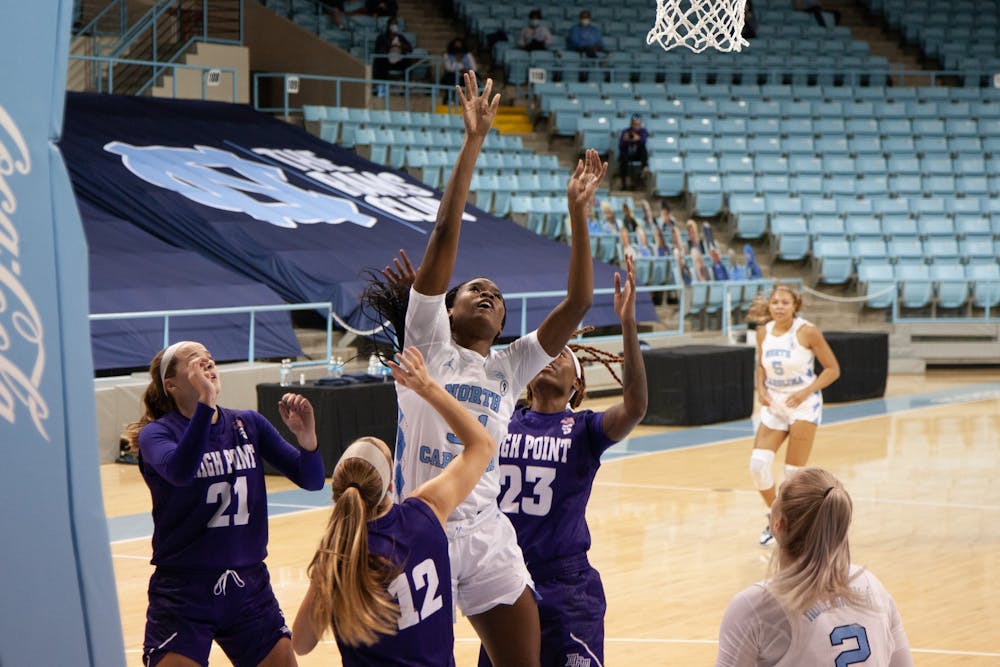The North Carolina women’s basketball team will play 29 games for the 2021-2022 regular season.
Here’s the most notable aspects of the schedule:
- The season will open on Nov. 9 at home against North Carolina A&T.
- The Tar Heels will then play nine more non-conference games, including home games against Appalachian State, James Madison, UNC Asheville and Jacksonville.
- On Thanksgiving weekend, the Tar Heels will travel to Bimini in the Bahamas to play in the Goombay Splash against VCU and Washington.
- UNC will then play in the Big Ten/ACC Challenge at Minnesota on Dec. 1.
North Carolina will begin conference play on Dec. 19 at Boston College. Their first home conference game is on Dec. 30 against Syracuse.
Based on AP’s top 25 preseason rankings, UNC has a handful of ranked opponents on their schedule, most notably two matchups against No. 5 N.C. State. The teams play in Raleigh on Jan. 6 and at home on Jan. 30.
Last year, the Wolfpack finished with a 22-3 record, though it dropped a game to the Tar Heels 76-69. Their high-powered offense ranked first in the ACC with 77.2 points per game, led by Elissa Cunane, who averaged 16.3 points and 8.3 rebounds.
N.C. State also shot from behind the arc exceptionally well, ranking first in the ACC at 36.7 percent. Its top three-point shooter, Jakia Brown-Turner, finished second on the team in scoring behind Cunane with 13.5 points per game. Brown-Turner also shot at a 37.0 percent clip from downtown. Expect the versatile scoring combination of Brown-Turner and Cunane to challenge the Tar Heels’ defensive spacing.
Additionally, the Tar Heels will play seven more home conference games, against Clemson on Jan. 2, No. 24 Virginia Tech on Jan. 9, Virginia on Jan. 20, Miami on Feb. 6, Pittsburgh on Feb. 10 and No. 6 Louisville on Feb. 17.
Louisville has not lost to UNC since March 29, 2008. The Cardinals went 26-4 last season, finishing first in the ACC. Even though they lost star guard Dana Evans to the WNBA, the Cardinals have plenty of other weapons. When the teams met last year, Louisville had six players score in the double-digits, exemplifying their dynamic offense.




